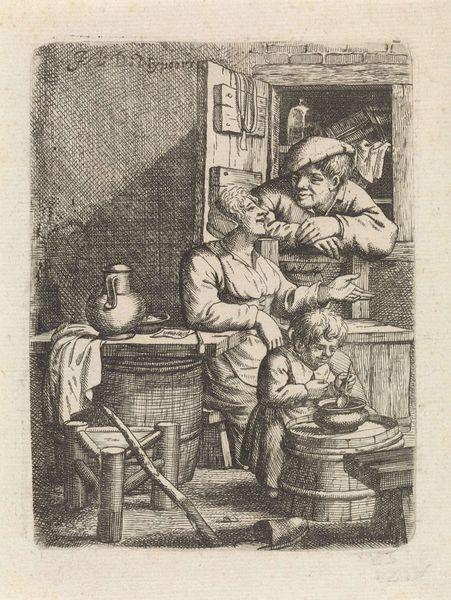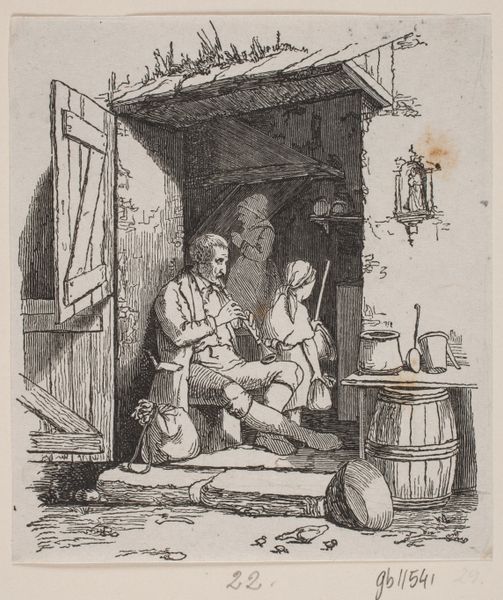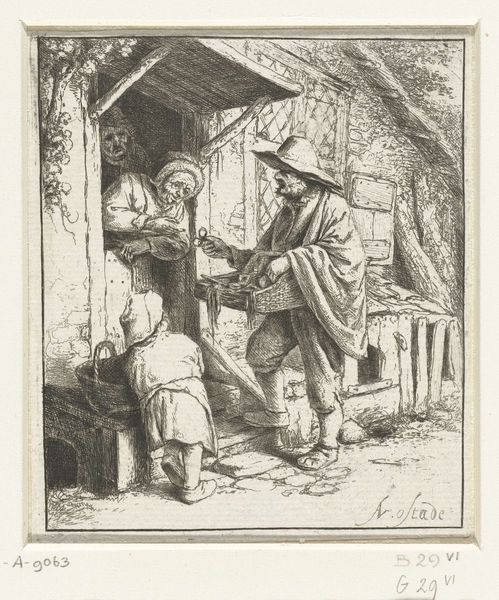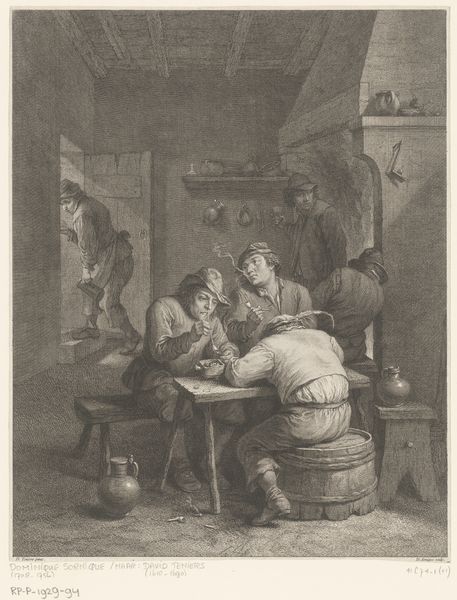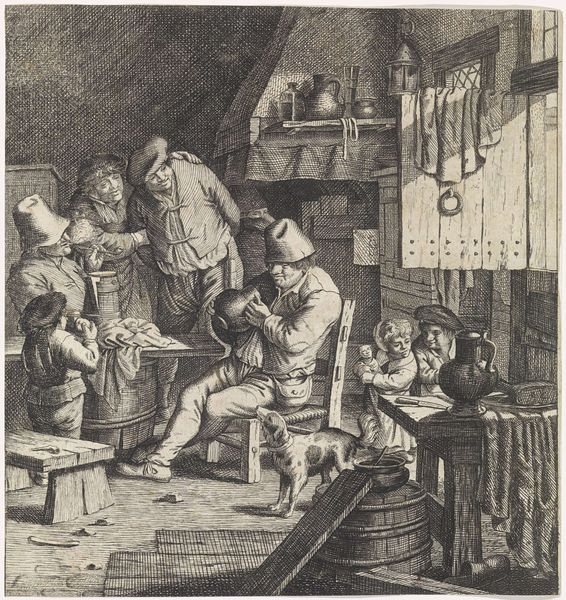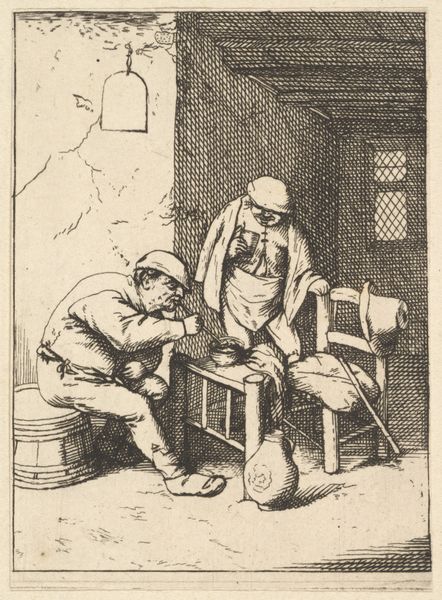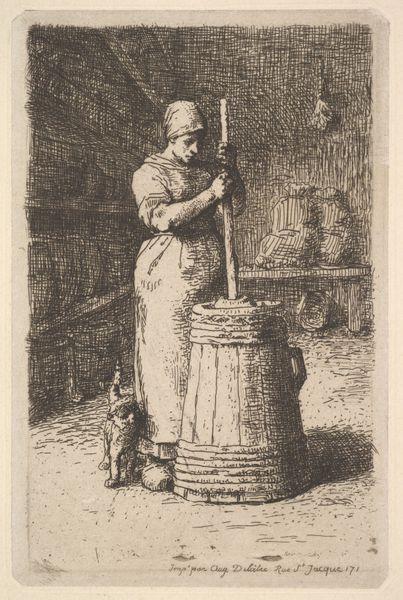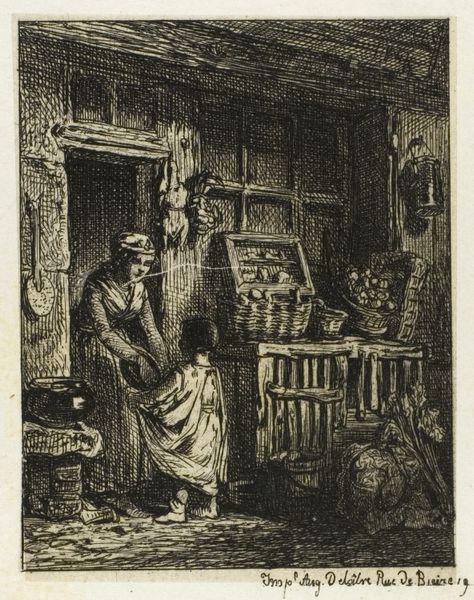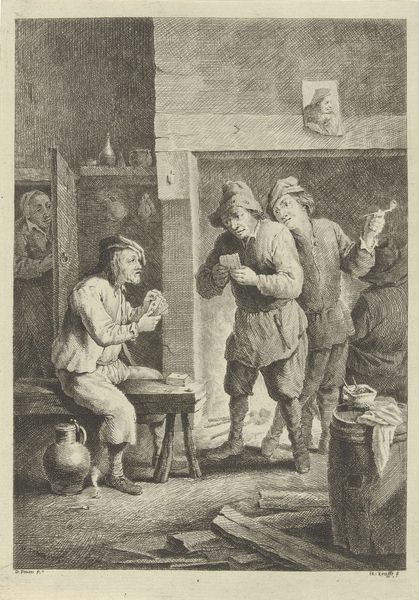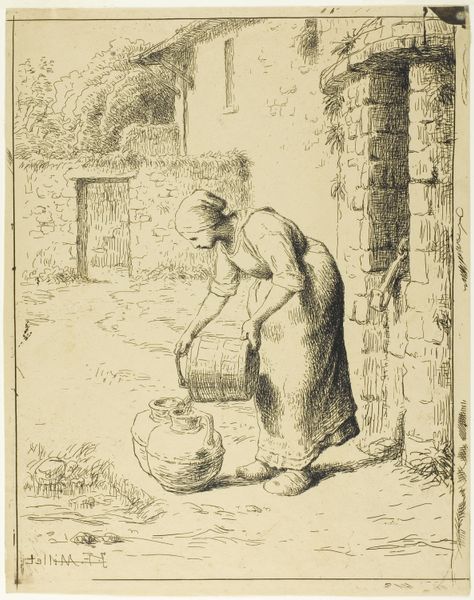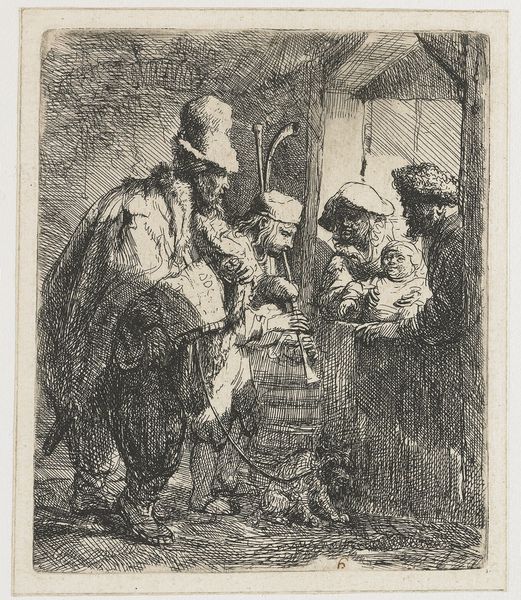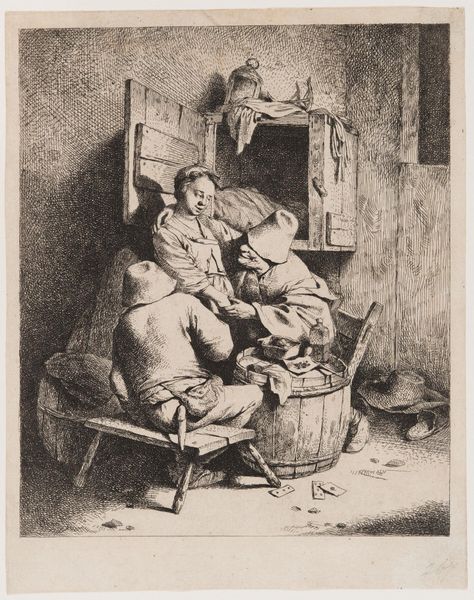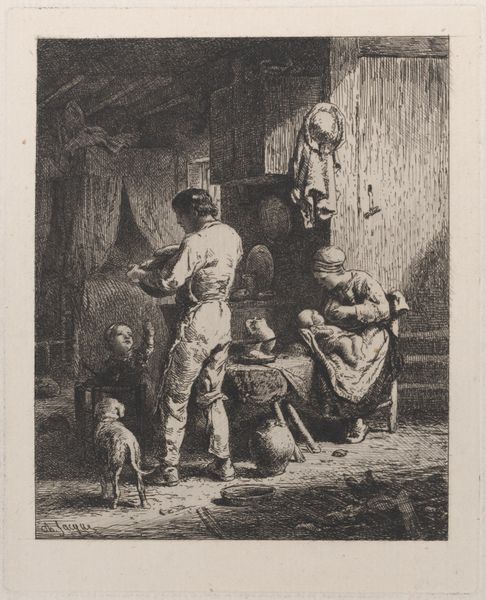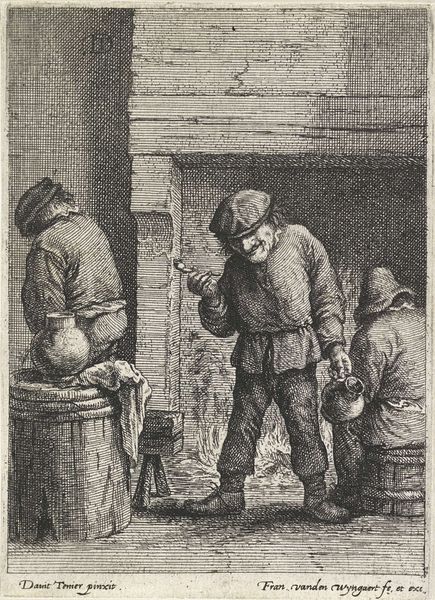
drawing, print, etching
#
drawing
# print
#
etching
#
landscape
#
figuration
#
genre-painting
#
realism
Dimensions: Sheet: 5 5/16 × 3 15/16 in. (13.5 × 10 cm) Image: 4 1/4 × 3 9/16 in. (10.8 × 9.1 cm)
Copyright: Public Domain
Editor: So, this is "Women Washing" by Charles Jacque, an etching from around the mid-19th century. The composition feels really intimate, like a captured moment in a humble, working-class home. The textures created by the etching are pretty remarkable, aren't they? What stands out to you the most about it? Curator: The focus on the labor of women, particularly domestic work, is key. This etching, a readily reproducible form, brings that reality to a wider audience, contrasting with idealized portrayals of women. Notice the rough-hewn wood of the well and buckets – it’s not just setting, it’s about the tools and material conditions defining these lives. Editor: That’s interesting, because I almost overlooked the buckets and the well itself, focusing on the women's posture. I do see your point. Curator: Think about the labor involved. Gathering water, washing clothes... Jacque uses etching to capture this texture and show us that these weren’t easy, idyllic tasks. It invites us to contemplate the division of labor and the roles women played in sustaining households. How do you think that accessibility – being a print, multiples of which could circulate – affected the art world? Editor: I hadn't considered that so carefully before, focusing on the means of production and consumption really changes how I perceive it. This becomes less about aesthetic skill, and more about… raising awareness? Curator: Precisely. Etching democratizes art, bringing scenes of everyday life to those who might not have access to oil paintings displayed in salons. Jacque's decision to employ this medium suggests an intent to connect with a different audience and showcase previously underrepresented facets of labor and domestic life. Editor: That’s a fantastic way to think about this. It's so much more than just an image of women washing. It's about access, labor, and material reality. I'll never look at an etching the same way again. Curator: Indeed. Looking closely at material, production and accessibility opens us up to different questions and expands our understanding of art's role in society.
Comments
No comments
Be the first to comment and join the conversation on the ultimate creative platform.
